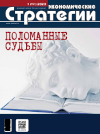Architectural Engineering of Hybrid Models Incorporating Digital Twins and Machine Learning
DOI: 10.33917/es-5.191.2023.94-99
In modern engineering of complex technical systems [1] digital twins and artificial intelligence systems started to be applied, while these subsystems have their own methods and tools for systemic, mathematical and computer modeling. Lack of a normalized approach to combining data from disparate sub-systems into a single system results in a “one-off” assembly methodology or in creation of unique digital models and intelligent systems, which impedes their further transformation into more complex both technical and intelligent systems. In this regard, the search for a standard form of representing such subsystems into a single system becomes relevant, along with the task of developing a methodology for the unified design and production of intelligent systems based on the use of model-oriented system engineering [2, 3, 4]. The work names and systematizes methods and techniques for such developments, demonstrates a standard approach to a normalized platform representation of models of various subsystems, which initially have their own methods and presentation tools; results of a normalized policy for constructing a platform of models from various subsystems for an anthropomorphic robot and spacecraft are described. Within the framework of the presented example, complementary methods of digital multiphysics modeling, digital twins and machine learning are positioned.
References:
1. Romanov A.A. Prikladnoi sistemnyi inzhiniring [Applied Systems Engineering]. Moscow, FIZMATLIT, 2015.
2. Kondrat’ev V.V. Model’no-orientirovannyi sistemnyi inzhiniring 2.0 [Model-Based Systems Engineering 2.0]. Moscow, MFTI, 2021.
3. Garichev S.N., Gorbachev R.A., Davydenko E.V., Dzhaparov B.A., Kondrat’ev V.V. Model’no-orientirovannyi inzhiniring fiziko-tekhnicheskikh, informatsionnykh i intellektual’nykh system [Model-based Engineering of Physical, Technical, Information and Intelligent Systems]. Trudy MFTI, 2022, vol.
14, no 2.
4. Aleshchenko A.S., Klishev O.P., Kondrat’ev V.V., Rasskazov A.A. Sovmeshchenie arkhitekturnykh i matematicheskikh modelei v sistemnom inzhiniringe tekhnicheskikh system [Combination of Architectural and Mathematical Models in System Engineering of Technical Systems]. Kosmonavtika i raketostroenie, 2021, no 5.
5. Potyupkin A.Yu., Chechkin A.V. Iskusstvennyi intellekt. Na baze informatsionno-sistemnoi izbytochnosti [Artificial Intelligence. Based on InformationSystem Redundancy]. Mosc ow, Kurs, 2022.
6. GOST R 57700-37–2021. Komp’yuternye modeli i modelirovanie. Tsifrovye dvoiniki izdeliya. Obshchie polozheniya [GOST R 57700-37–2021. Computer
models and simulation. Digital twins of products. General provisions]. Kodeks. URL: https://docs.cntd.ru/document/1200180928
7. Borovkov A.I., Burdakov S.F., Klyavin O.I., et al. Komp’yuternyi inzhiniring [Computer Engineering]. Ucheb. posobie. Saint Petersburg, Izd-vo Politekhn.
un-ta, 2012.
8. Peredovye proizvodstvennye tekhnologii: vozmozhnosti dlya Rossii. Ekspertno-analiticheskii doklad: Monografiya [Advanced Manufacturing Technologies: Opportunities for Russia. Expert Analytical Report: Monograph]. Pod red. A.I. Borovkova. Saint Petersburg, Politekh-Press, 2020.
9. Chetvergov V., Vychegzhanin K., Polyakov A. Ispol’zovanie metodov model’no-orientirovannogo sistemnogo inzhiniringa pri sozdanii metodiki planirovaniya proizvodstvennogo protsessa osvoeniya novykh produktov na predpriyatiyakh OPK [Using Model-based Systems Engineering Methods to create a Methodologyfor Planning the Production Process for D eveloping New Products at Defense Industry Enterprises]. Russkii inzhener, 2021, no 03(72).
10. Efimenko G.G., Zaletaev S.V., Kartseva E.Yu., Klishev O.P., Kondrat’ev V.V., Kusov A.L., Rasskazov A.A., Rumynskii N.A. Kompleksnaya matematicheskaya model’ fizicheskikh protsessov v obespechenie proektirovaniya nizkoorbital’nykh kosmicheskikh apparatov. Chasti 1 i 2 [A Comprehensive Mathematical Model of Physical Processes to Support the Design of Low-orbit Spacecraft. Parts 1 and 2]. Kosmonavtika i raketostroenie, 2022, no 4.
|
1. |



